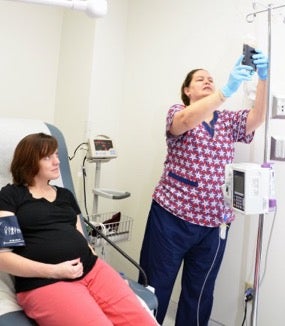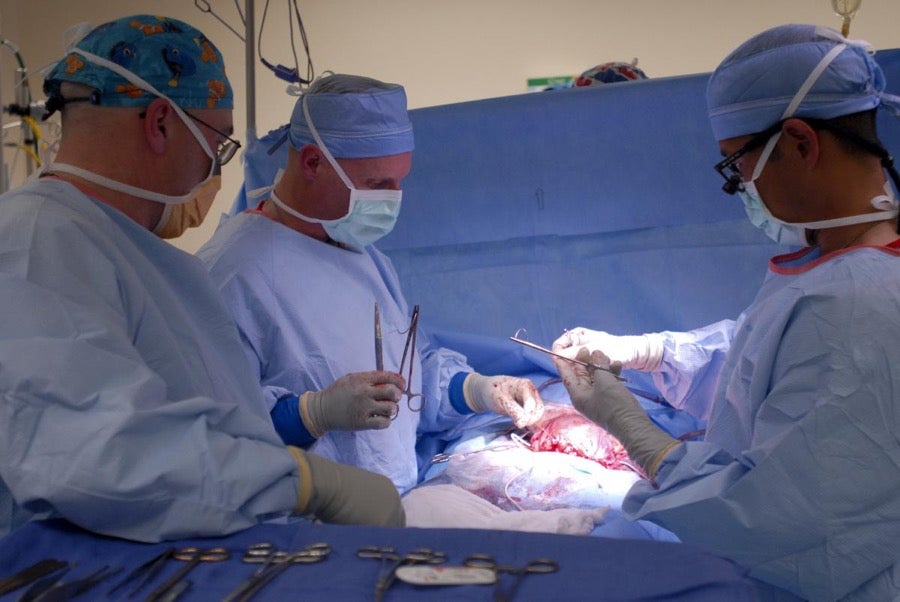Labor induction (also referred to as inducing labor) is when uterine contractions are stimulated to begin the process of labor during a vaginal birth. Labor induction is not a new practice. In fact, it dates back to Ancient Greece as Hippocrates, who is considered the Father of Medicine, recorded descriptions of dilating the cervical canal.1 Labor induction has evolved significantly as time has progressed. There are now a wide array of options available to consider when consulting your obstetrician about the best option for you.

Table of Contents
Reasons For Labor Induction
When determining if labor induction is the best option, your obstetrician will consider your overall health, the health of your baby, the gestational age and size of the baby, the baby’s position in the uterus, and the status of your cervix.2 Here are a variety of reasons that your health care provider may suggest labor induction:

- Post term pregnancy: When your pregnancy has surpassed 42 weeks of gestation, both mother and baby are at risk.
- Premature rupture of membranes (PROM): When fetal membranes have broken but labor has not yet begun with 24 to 48 hours, the risk of infection outweighs the risk of the baby being born before it has reached a healthy gestational age.3
- Chorioamnionitis: This common pregnancy complication is characterized by inflammation of the fetal membranes as a result of a bacterial infection. Without medical intervention it can result in severe outcomes. For mothers, postpartum infection and sepsis can occur. The risks to the infant include stillbirth, premature birth, neonatal sepsis, chronic lung disease, brain injury, cerebral palsy, and other neurodevelopmental disabilities.4
- Non-functional placenta: The mother’s placenta no longer functions correctly, so they baby is in danger of no longer getting the nutrients and oxygen it needs.5
- Insufficient amniotic fluid: There is not enough amniotic fluid to surround the baby as it grows. This is dangerous as the amniotic fluid serves many purposes like protecting the baby from trauma and infection, maintaining the temperature in the womb, and giving the baby a range of motion allowing it to develop during the gestational period.
- Stillbirth: Fetal death in the womb and a previous history of stillbirth may warrant induced labor.
- Twins: A pregnancy with multiple babies that exceeds 38 weeks may warrant induced labor.
- Preexisting Medical Conditions: Conditions like kidney disease, obesity, diabetes, and high blood pressure can put both the mother and baby at risk during delivery.
- Other Pregnancy Complications: Hypertension, preeclampsia, and gestational diabetes may warrant induced labor because of the risk to the baby and mother.
- Elective Labor Induction: This is a matter of convenience, not emergency, where the mother has no medical need for this intervention but requests the procedure regardless. This can be convenient for expectant mothers who have an unpredictable schedule, or live far away from where they will be delivering their baby.
Methods Of Labor Induction

There are multiple options available when it comes to medically induced labor:
- Prostaglandins: Prostaglandins act like hormones and, when administered, help thin out the cervix and kick-start contractions.6
- Foley Catheter/Cervical Ripening Balloon: A thin tube with one or two deflated balloons at the end is inserted into the vagina. As these balloons fill with water, it puts pressure on the cervix which signals the body to release prostaglandins and dilate the cervix.6
- Membrane Strip/Sweep: For those who are already partially dilated, a health care provider can insert their finger through the cervix and manually separate the amniotic sac from the uterus. This triggers the release of prostaglandins and can lead to contractions. 6
- Membrane Rupture: If you are already partially dilated, a health care provider can insert a tiny hooked tool through the cervix to break the amniotic sac manually. If this is not enough to induce labor, the health care provider will follow up with intravenous oxytocin.6
- Oxytocin: Oxytocin is a hormone used to cause uterine contractions and start labor.
Risks of Labor Induction
As with many medical procedures, labor induction has potential risk involved. It is usually safe, but one should be conscious of the risks associated with the different methods.
Oxytocin and synthetic prostaglandins can sometimes cause contractions that are too frequent, long, and strong, which may distress the baby during labor. These two medications, along with membrane rupture, can (on rare occasion) accidentally cause placental abruption or uterine rupture.6 An attempt to induce labor may be unsuccessful, in which case the health care provider may suggest to wait for labor to begin naturally, or to receive a C-section. Regardless of the situation, your health care provider will only suggest what they believe is the safest course of action for both you and the baby.

Here are also several scenarios where labor induction is not a viable option:2
- If you have had a prior C-section with a classical incision or a major uterine surgery
- If your placenta is blocking your cervix (placenta previa)
- If your baby is breech or in the sideways (transverse lie) position, which means they would not be delivered head first
- If you have an active genital herpes infection
- If your umbilical cord slips into your vagina prior to delivery
- If tests indicate your baby would not be able to handle the stress of contractions6
- If you are having twins and the first baby is breech, or if you are having three or more babies6
At Home Techniques To Induce Labor
While there is no at home technique with a consistent success rate, there are a collection of DIY tips that may help you induce labor on your own. The most popular techniques are sexual intercourse and nipple stimulation.6 Sexual intercourse can potentially induce labor because semen contains prostaglandins and the muscle contractions from orgasms could help stimulate labor contractions. As for nipple stimulation, this helps trigger the release of oxytocin which can help induce labor.
While many expectant mothers are extremely eager to deliver their babies as soon as possible, allowing yourself to reach a full-term pregnancy (if your health permits) has a lot of benefits. It allows the baby sufficient time to grow and develop both physically and mentally.

Concluding Remarks
Every pregnancy comes with its own challenges and triumphs. If complications arise during your pregnancy, speak with your healthcare provider as to whether or not labor induction would be the right decision for you. If you do need to induce labor, know your options and work with your provider to determine the safest choice for the health of both you and your baby.
References
- Sanchez-Ramos, L, Kaunitz, A, Glob. libr. women’s med., (ISSN: 1756-2228) 2009; DOI 10.3843/GLOWM.10130
- Mayo Clinic Staff. “Labor Induction.” Mayo Clinic, Mayo Foundation for Medical Education and Research, 11 Sept. 2017.
- Caughey, Aaron B, Julian N Robinson, and Errol R Norwitz. “Contemporary Diagnosis and Management of Preterm Premature Rupture of Membranes.” Reviews in Obstetrics and Gynecology 1.1 (2008): 11–22. Print.
- Tita, Alan T. N., and William W. Andrews. “Diagnosis and Management of Clinical Chorioamnionitis.” Clinics in perinatology 37.2 (2010): 339–354. PMC. Web. 11 Nov. 2017.
- American Pregnancy Association. “Inducing Labor.” American Pregnancy Association, 19 May 2016, americanpregnancy.org/labor-and-birth/inducing-labor/.
- BabyCenter Medical Advisory Board. “Inducing Labor.” BabyCenter, 1 Nov. 2015.
Last Updated: 1 December 2017.
